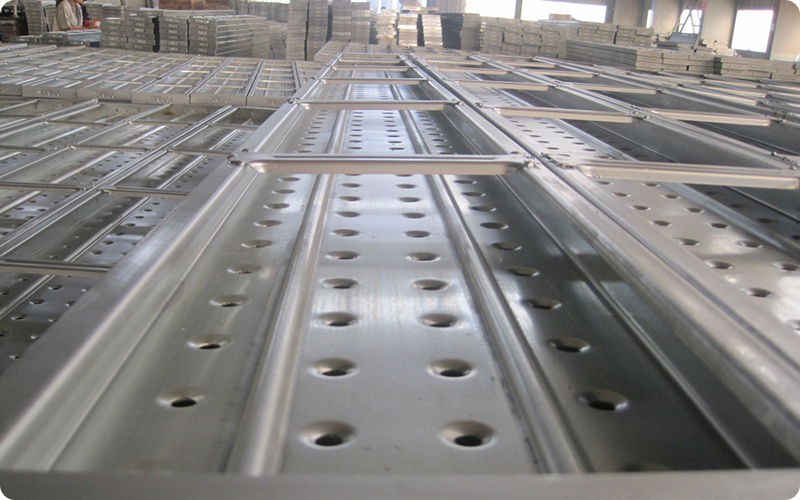What Are the Features of Galvanized Steel Planks?
Steel plank, also called steel scaffold plank, scaffold board, walk board, or galvanized steel plan, is a kind of construction equipment in the construction industry, which is widely used in shipbuilding, petrochemical, water conservancy, and hydropower, civil construction, marine engineering construction industry.

So do you know what are the advantages of galvanized steel planks? Let's learn more about it.
Steel scaffold planks provide the greatest strength, making them ideal for high load bearing applications. However, they increase the overall weight of the scaffolding structure. When steel planks are applied, the seamless steel pipe can be moderately reduced to improve construction efficiency. Compared with the price of wooden planks, the cost of steel scaffolding planks is relatively low and can be recycled.
1. Galvanized steel plank has a high utilization rate and long service life; It is easy to be disassembled and can still get a reward even if it is junked.
2. The unique convex hole design of galvanized steel planks can not only relieve weight but also prevent skidding and deformation.
3. The surface of the steel scaffolding plank is hot-dip galvanized, which features fireproof and anti-corrosion.
4. Galvanized steel planks are manufactured with carbon structural steel and cold drawing technology. With hot dip galvanized technology, the service life is up to 5-8 years.
5. The material of the scaffolding plank is made of Q195 steel, which has a high carrying capacity and can carry 5-6 people without deformation, which is sturdy and durable.
Applying quality steel planks is vital to ensuring the safety of employees and equipment on scaffolding structures. ADTO Scaffold offers global customers different types of quality scaffolding planks for sale. Please contact us if you have any needs.
评论
发表评论